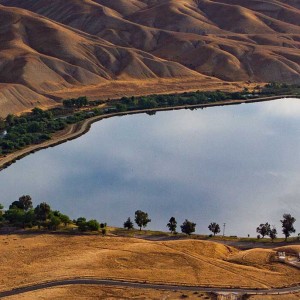Federal Water Tap, February 10: Budget Bill Muddles U.S. Foreign Policy for Large Dams
Language in the budget deal that passed Congress in January instructed U.S. representatives to the World Bank and other development banks to oppose loans, grants, or policies that support large hydroelectric dams, defined as those taller than 15 meters (49 feet).
It is not clear, however, how that message, which was directed at international financial institutions, will affect U.S. bilateral aid and loans. For instance, support for hydroelectric power is a key element of America’s energy strategy in Pakistan.
Tim Rieser, foreign policy aide to Sen. Patrick Leahy (D-Vermont), told Circle of Blue that any proposed use of funds for dam projects would be considered case by case. The provision in the budget bill opposing funding for large dams was included at Leahy’s request.
“Any large hydroelectric project would be subjected to serious scrutiny,” Rieser said. “History is replete with large dams financed with public funds resulting in cost overruns, environmental problems, forced displacement, and electricity that doesn’t benefit the local people who need it most.”
Last year, the United States finished building two new hydroelectric dams in Pakistan, Gomal Zam and Satpara, both of which also provide flood control and irrigation. The U.S. contributed $US 97 million to Gomal Zam.
Richard Olson, U.S. ambassador to Pakistan, has stated his support for a grander project: Diamer Basha, a $US 12 billion dam on the Indus that would rise 270 meters (885 feet).
The State Department is still discussing what the budget bill means for its policies and did not yet have a response, said department spokeswoman Margaret Young.
“There isn’t a lot to be said at this point,” Young wrote in an email to Circle of Blue.
Geothermal Energy’s Water Concerns
Water consumption and potential contamination of aquifers used for drinking water are two areas of concern for geothermal energy development, particularly in the water-scare American West, the region with the highest geothermal resources, according to a report from JASON, an independent group that advises the U.S. government on defense, science, and technology.
Geothermal systems using a cooling tower consume more water more unit of energy than gas, coal, or nuclear power plants, according to figures in the report, which was prepared for the Energy Department.
“Water availability can be a significant factor in operating geothermal plants in areas of water scarcity, and could become a limiting constraint for [enhanced geothermal systems] at scale,” the report states.
Meanwhile, the Energy Department announced a $US 3 million research project to produce better maps of sites with geothermal potential. Better maps would improve the success rate when drilling wells and reduce energy development costs.
Missouri River Degradation
The Missouri River is cutting into the river bed in its namesake state, dropping the height of the river and undermining drinking water intakes, road and railway bridges, pipelines, and levees. The Army Corps of Engineers will assess options for counteracting the river bed’s degradation and review the environmental consequences of those options.
The study will focus on roughly 85 kilometers (53 miles) of river in the Kansas City metropolitan area. The public can submit comments regarding the scope of the assessment by March 31, using this form. The draft environmental impact statement is expected by summer 2015.
Raise the Dam?
The Army Corps of Engineers will assess the environmental effects of a proposal to increase the height of Folsom Dam, northeast of Sacramento, California. Raising the dam by 1.1 meters (3.5 feet) would allow the reservoir to hold more water, helping to control floods. Public comments on the scope of the review are due March 9 and can be submitted to Tyler.M.Stalker@usace.army.mil.
Hazardous Waste
Tracking the movement of hazardous waste from where it is produced to where it is stored will soon be done electronically, a change in reporting that the U.S. Environmental Protection Agency will phase in over the next several years according to a final rule published Friday. Ordered by a 2012 federal law and discussed for at least a dozen years, the e-Manifest system is not yet ready for operation. The EPA will set compliance dates once the Internet-based reporting system is functioning.
Climate Hubs
Agriculture Secretary Tom Vilsack announced the creation of seven regional climate change information centers and three centers for specialized research. Housed within existing USDA research facilities, the hubs will translate and disseminate climate information relevant to farmers, ranchers, and forest owners who live in each region. Three “sub” hubs will focus on niche topics in the Midwest (Great Lakes forestry), Southeast (Caribbean issues), and Southwest (specialty crops and regional forests).
Federal Water Tap is a weekly digest spotting trends in U.S. government water policy. To get more water news, follow Circle of Blue on Twitter and sign up for our newsletter.
Brett writes about agriculture, energy, infrastructure, and the politics and economics of water in the United States. He also writes the Federal Water Tap, Circle of Blue’s weekly digest of U.S. government water news. He is the winner of two Society of Environmental Journalists reporting awards, one of the top honors in American environmental journalism: first place for explanatory reporting for a series on septic system pollution in the United States(2016) and third place for beat reporting in a small market (2014). He received the Sierra Club’s Distinguished Service Award in 2018. Brett lives in Seattle, where he hikes the mountains and bakes pies. Contact Brett Walton






Leave a Reply
Want to join the discussion?Feel free to contribute!